Yuanfang Chen
EEG-based Emotion Style Transfer Network for Cross-dataset Emotion Recognition
Aug 09, 2023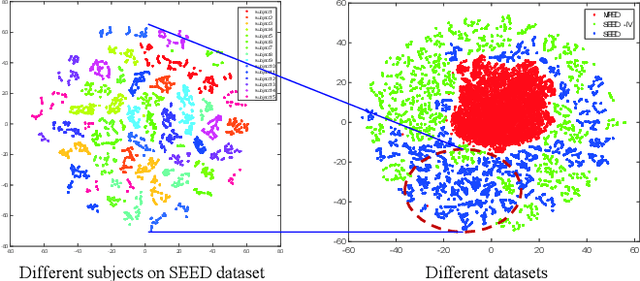



Abstract:As the key to realizing aBCIs, EEG emotion recognition has been widely studied by many researchers. Previous methods have performed well for intra-subject EEG emotion recognition. However, the style mismatch between source domain (training data) and target domain (test data) EEG samples caused by huge inter-domain differences is still a critical problem for EEG emotion recognition. To solve the problem of cross-dataset EEG emotion recognition, in this paper, we propose an EEG-based Emotion Style Transfer Network (E2STN) to obtain EEG representations that contain the content information of source domain and the style information of target domain, which is called stylized emotional EEG representations. The representations are helpful for cross-dataset discriminative prediction. Concretely, E2STN consists of three modules, i.e., transfer module, transfer evaluation module, and discriminative prediction module. The transfer module encodes the domain-specific information of source and target domains and then re-constructs the source domain's emotional pattern and the target domain's statistical characteristics into the new stylized EEG representations. In this process, the transfer evaluation module is adopted to constrain the generated representations that can more precisely fuse two kinds of complementary information from source and target domains and avoid distorting. Finally, the generated stylized EEG representations are fed into the discriminative prediction module for final classification. Extensive experiments show that the E2STN can achieve the state-of-the-art performance on cross-dataset EEG emotion recognition tasks.
Progressive Graph Convolution Network for EEG Emotion Recognition
Dec 14, 2021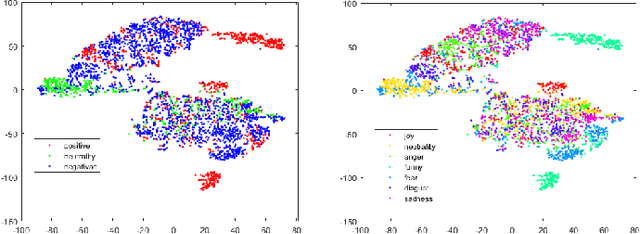
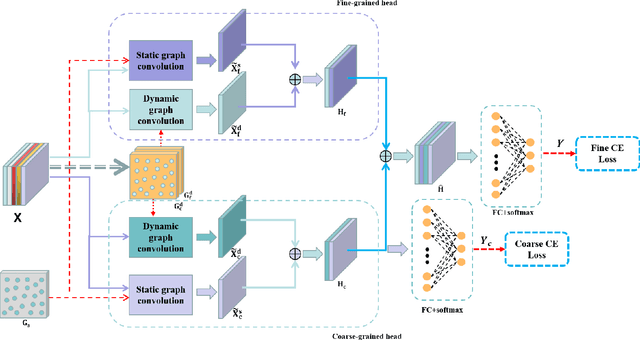
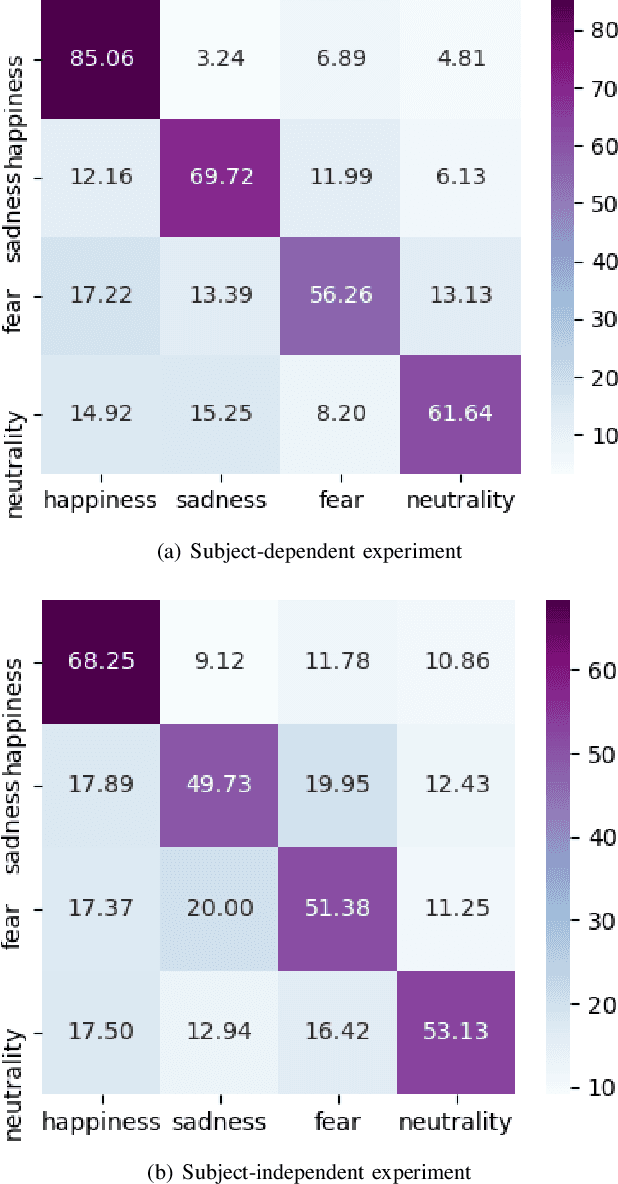
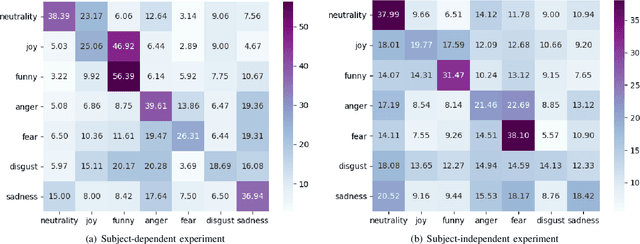
Abstract:Studies in the area of neuroscience have revealed the relationship between emotional patterns and brain functional regions, demonstrating that dynamic relationships between different brain regions are an essential factor affecting emotion recognition determined through electroencephalography (EEG). Moreover, in EEG emotion recognition, we can observe that clearer boundaries exist between coarse-grained emotions than those between fine-grained emotions, based on the same EEG data; this indicates the concurrence of large coarse- and small fine-grained emotion variations. Thus, the progressive classification process from coarse- to fine-grained categories may be helpful for EEG emotion recognition. Consequently, in this study, we propose a progressive graph convolution network (PGCN) for capturing this inherent characteristic in EEG emotional signals and progressively learning the discriminative EEG features. To fit different EEG patterns, we constructed a dual-graph module to characterize the intrinsic relationship between different EEG channels, containing the dynamic functional connections and static spatial proximity information of brain regions from neuroscience research. Moreover, motivated by the observation of the relationship between coarse- and fine-grained emotions, we adopt a dual-head module that enables the PGCN to progressively learn more discriminative EEG features, from coarse-grained (easy) to fine-grained categories (difficult), referring to the hierarchical characteristic of emotion. To verify the performance of our model, extensive experiments were conducted on two public datasets: SEED-IV and multi-modal physiological emotion database (MPED).
Triaging moderate COVID-19 and other viral pneumonias from routine blood tests
May 13, 2020
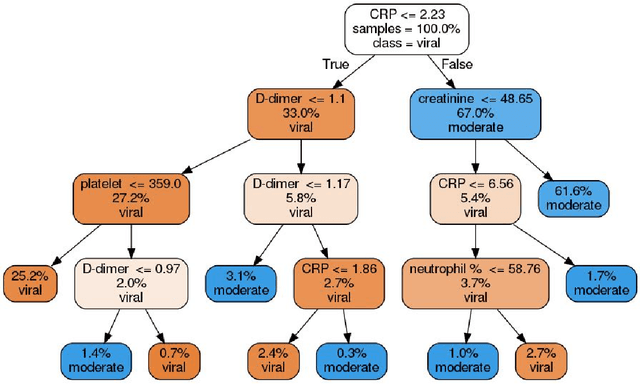
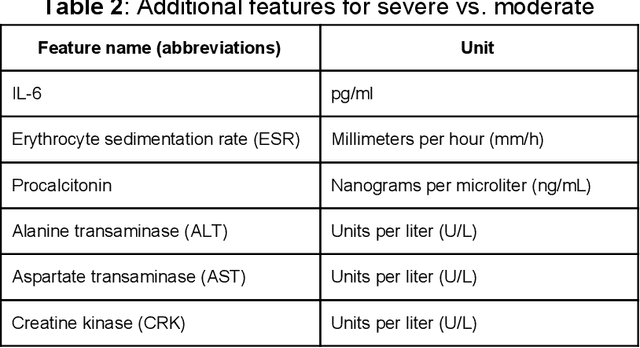
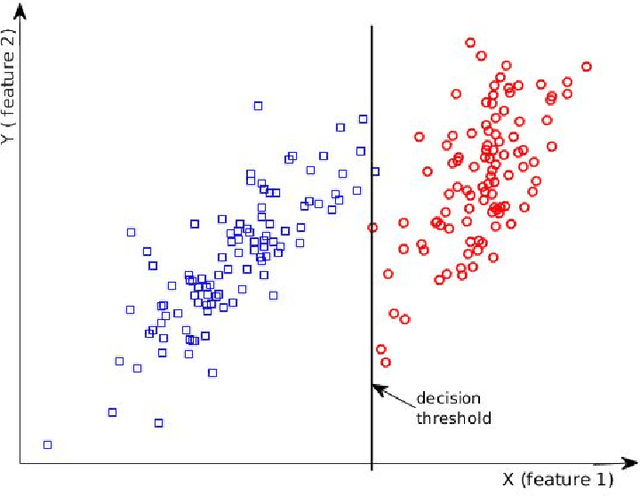
Abstract:The COVID-19 is sweeping the world with deadly consequences. Its contagious nature and clinical similarity to other pneumonias make separating subjects contracted with COVID-19 and non-COVID-19 viral pneumonia a priority and a challenge. However, COVID-19 testing has been greatly limited by the availability and cost of existing methods, even in developed countries like the US. Intrigued by the wide availability of routine blood tests, we propose to leverage them for COVID-19 testing using the power of machine learning. Two proven-robust machine learning model families, random forests (RFs) and support vector machines (SVMs), are employed to tackle the challenge. Trained on blood data from 208 moderate COVID-19 subjects and 86 subjects with non-COVID-19 moderate viral pneumonia, the best result is obtained in an SVM-based classifier with an accuracy of 84%, a sensitivity of 88%, a specificity of 80%, and a precision of 92%. The results are found explainable from both machine learning and medical perspectives. A privacy-protected web portal is set up to help medical personnel in their practice and the trained models are released for developers to further build other applications. We hope our results can help the world fight this pandemic and welcome clinical verification of our approach on larger populations.
DeepTFP: Mobile Time Series Data Analytics based Traffic Flow Prediction
Oct 01, 2017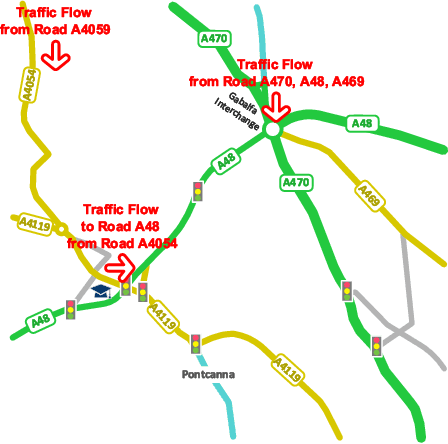
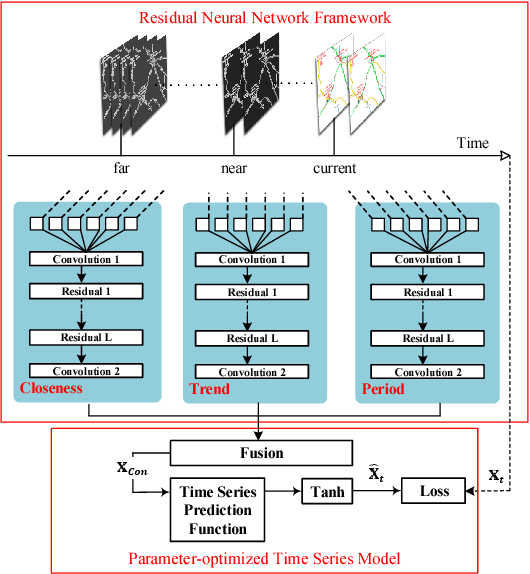
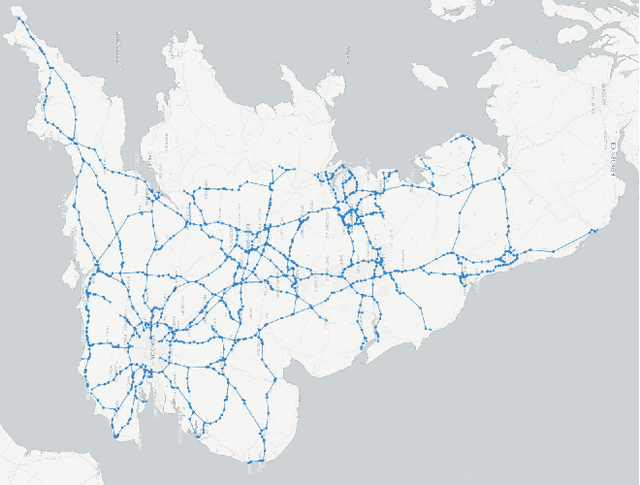
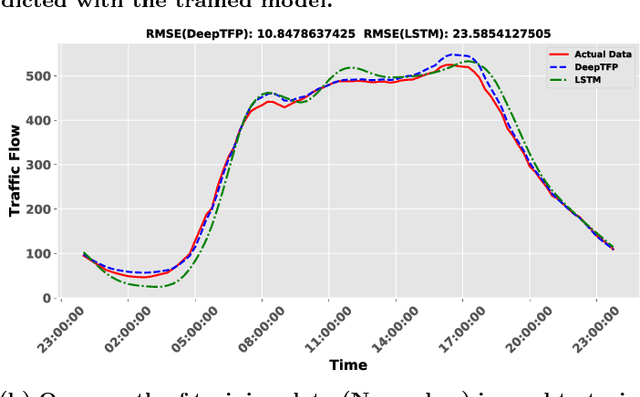
Abstract:Traffic flow prediction is an important research issue to avoid traffic congestion in transportation systems. Traffic congestion avoiding can be achieved by knowing traffic flow and then conducting transportation planning. Achieving traffic flow prediction is challenging as the prediction is affected by many complex factors such as inter-region traffic, vehicles' relations, and sudden events. However, as the mobile data of vehicles has been widely collected by sensor-embedded devices in transportation systems, it is possible to predict the traffic flow by analysing mobile data. This study proposes a deep learning based prediction algorithm, DeepTFP, to collectively predict the traffic flow on each and every traffic road of a city. This algorithm uses three deep residual neural networks to model temporal closeness, period, and trend properties of traffic flow. Each residual neural network consists of a branch of residual convolutional units. DeepTFP aggregates the outputs of the three residual neural networks to optimize the parameters of a time series prediction model. Contrast experiments on mobile time series data from the transportation system of England demonstrate that the proposed DeepTFP outperforms the Long Short-Term Memory (LSTM) architecture based method in prediction accuracy.
Deep Learning for Secure Mobile Edge Computing
Sep 23, 2017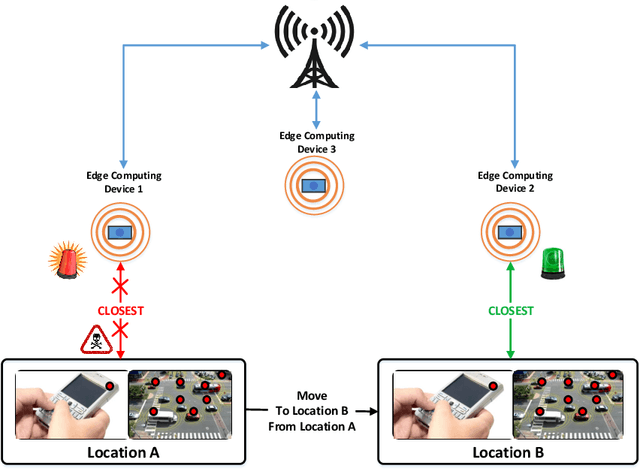



Abstract:Mobile edge computing (MEC) is a promising approach for enabling cloud-computing capabilities at the edge of cellular networks. Nonetheless, security is becoming an increasingly important issue in MEC-based applications. In this paper, we propose a deep-learning-based model to detect security threats. The model uses unsupervised learning to automate the detection process, and uses location information as an important feature to improve the performance of detection. Our proposed model can be used to detect malicious applications at the edge of a cellular network, which is a serious security threat. Extensive experiments are carried out with 10 different datasets, the results of which illustrate that our deep-learning-based model achieves an average gain of 6% accuracy compared with state-of-the-art machine learning algorithms.
When Traffic Flow Prediction Meets Wireless Big Data Analytics
Sep 23, 2017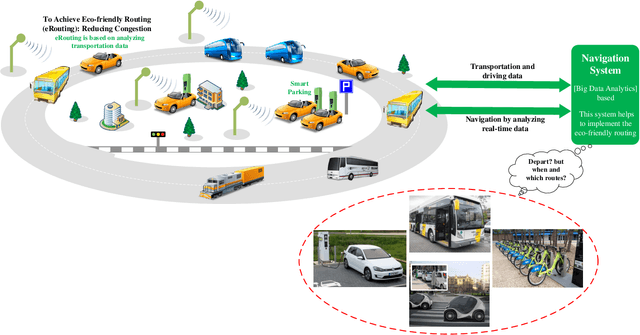
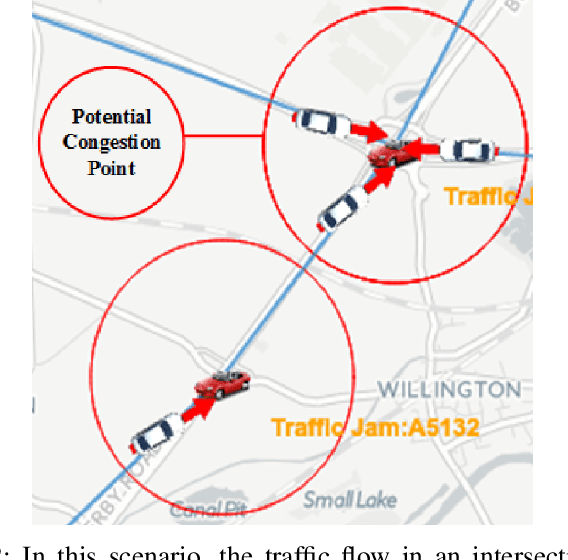
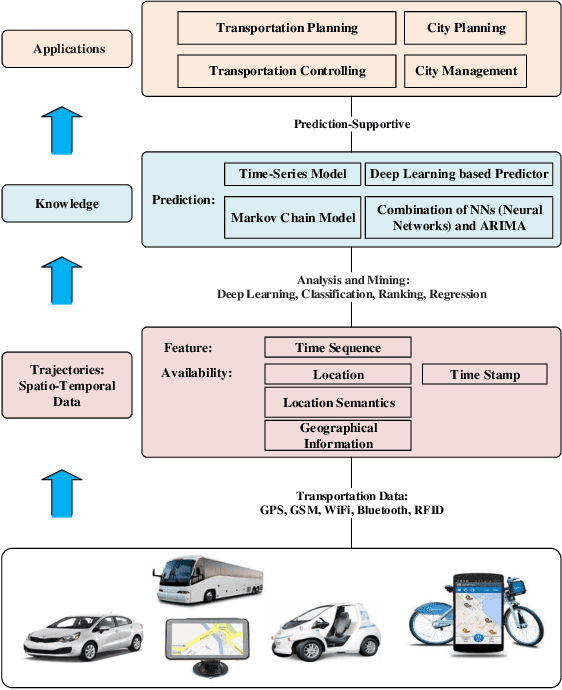
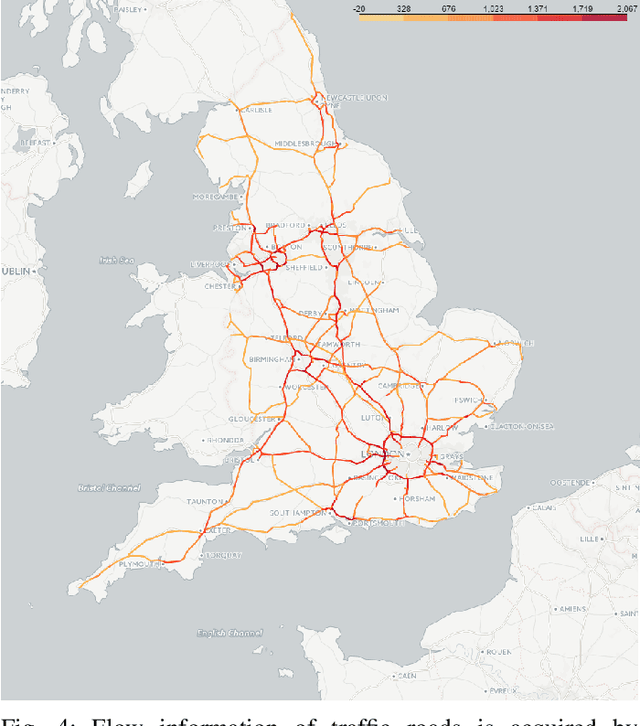
Abstract:Traffic flow prediction is an important research issue for solving the traffic congestion problem in an Intelligent Transportation System (ITS). Traffic congestion is one of the most serious problems in a city, which can be predicted in advance by analyzing traffic flow patterns. Such prediction is possible by analyzing the real-time transportation data from correlative roads and vehicles. This article first gives a brief introduction to the transportation data, and surveys the state-of-the-art prediction methods. Then, we verify whether or not the prediction performance is able to be improved by fitting actual data to optimize the parameters of the prediction model which is used to predict the traffic flow. Such verification is conducted by comparing the optimized time series prediction model with the normal time series prediction model. This means that in the era of big data, accurate use of the data becomes the focus of studying the traffic flow prediction to solve the congestion problem. Finally, experimental results of a case study are provided to verify the existence of such performance improvement, while the research challenges of this data-analytics-based prediction are presented and discussed.
 Add to Chrome
Add to Chrome Add to Firefox
Add to Firefox Add to Edge
Add to Edge